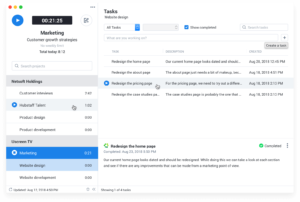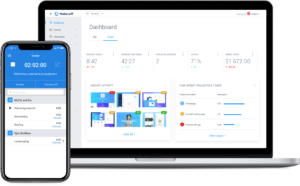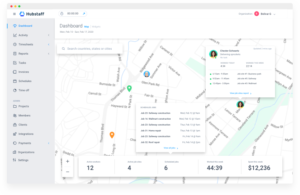Working From Home When Your Boss Is Watching

Dave Nevogt of Hubstaff Courtesy Dave Nevogt
Dave Nevogt doesn’t want to be Big Brother.
The cofounder and chief executive of Hubstaff, a Fishers company whose employee-monitoring software is used by 11,500 paying customers worldwide, has no interest in cracking the whip every time an employee opens Facebook. And he hopes the bosses who use Hubstaff’s software don’t, either. “It’s not really us sitting there monitoring the work being done,” he says. “It’s more about verifying that a time sheet is accurate.”
Nevogt founded Hubstaff in 2012 with fellow entrepreneur Jared Brown in response to his own struggles managing a remote team at a start-up. The software enables employers to track everything from the websites an employee visits while on the clock to their GPS coordinates (a feature some companies use to verify that salespeople are visiting clients). It can even calculate a productivity score based on the percentage of the workday an employee spends typing and moving the mouse.
Nevogt says interest in employee-monitoring software has surged over the past couple of months as teams have shifted to remote work amid the coronavirus crisis. He says trials of Hubstaff have tripled since March and that the company converts around one in every five users into a paying customer (the software costs between $7 and $20 per month per user).

The Hubstaff DashboardCourtesy Hubstaff
“Using a monitoring software like Hubstaff to allow remote employees to track their time in cases where they bill clients for labor costs offers clear benefits,” says Liz Malatestinic, a senior lecturer in Human Resource Management at Indiana University’s Kelley School of Business. But it also runs the risk of crossing the line into surveillance. “A successful remote work situation requires trust on the part of both parties in an employment relationship,” she says. “Technological oversight that’s too invasive can make employees feel that their employers don’t trust them.”
She says that companies that use monitoring software should communicate why it’s necessary and exactly how they’ll use the information gathered. She also says that employees should agree to participate in advance. “Ideally you would try to get employee buy-in to the idea,” she says. “But at minimum, you should try to minimize their fears through transparency.”
Yet while employees might consent to being monitored, one Hubstaff function creates potential privacy concerns. The software snaps a randomized screenshot of an employee’s computer screen about every 10 minutes, meaning the faces of those in a Zoom call who work outside the company may be visible to an employee’s boss.
Yet Nevogt stresses that employees retain the ability to switch the software off. Or an employer can decide not to enable a specific function, such as screenshots or GPS monitoring. “The conversation to opt out of an action happens on an individual basis between an employer and employee,” he says. “But an employee can always say, ‘I do not allow access.’”
And he notes that employees also retain delete power. “If something comes up that you don’t like, you can delete it,” he says. “And you’re always notified when a screenshot is taken.”
Nevogt uses the software to manage Hubstaff’s team of 60 remote employees, who work in locations around the world, from Europe to South America. And he says he’s seen a boost in his own productivity since he began using the software eight years ago. “When you see any clock, you think about how much benefit you’re getting for that time.” he says. “If you’re looking at Facebook, it makes you think, Hey, this is time I’m not going to get back.”
Nevogt stresses that rather than functioning as an Orwellian surveillance tool, Hubstaff, when used as intended, enables employees to track trends in their productivity and make adjustments accordingly. “It’s helped our Hubstaff team become very efficient, which is part of the reason why we’re in business today,” he says. “We proved it’s possible to grow a company while working remotely.”








